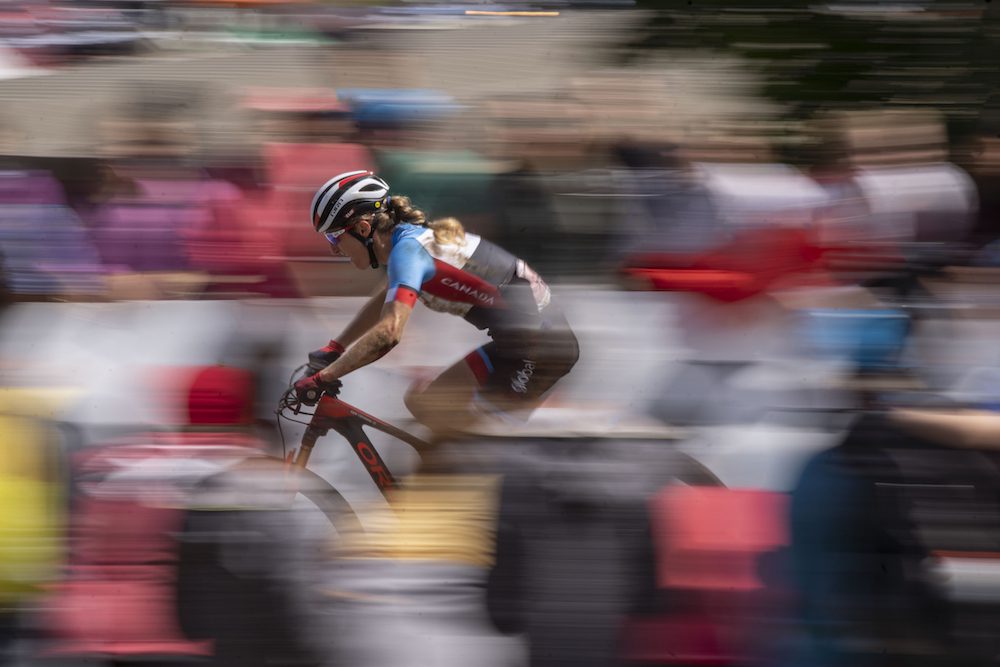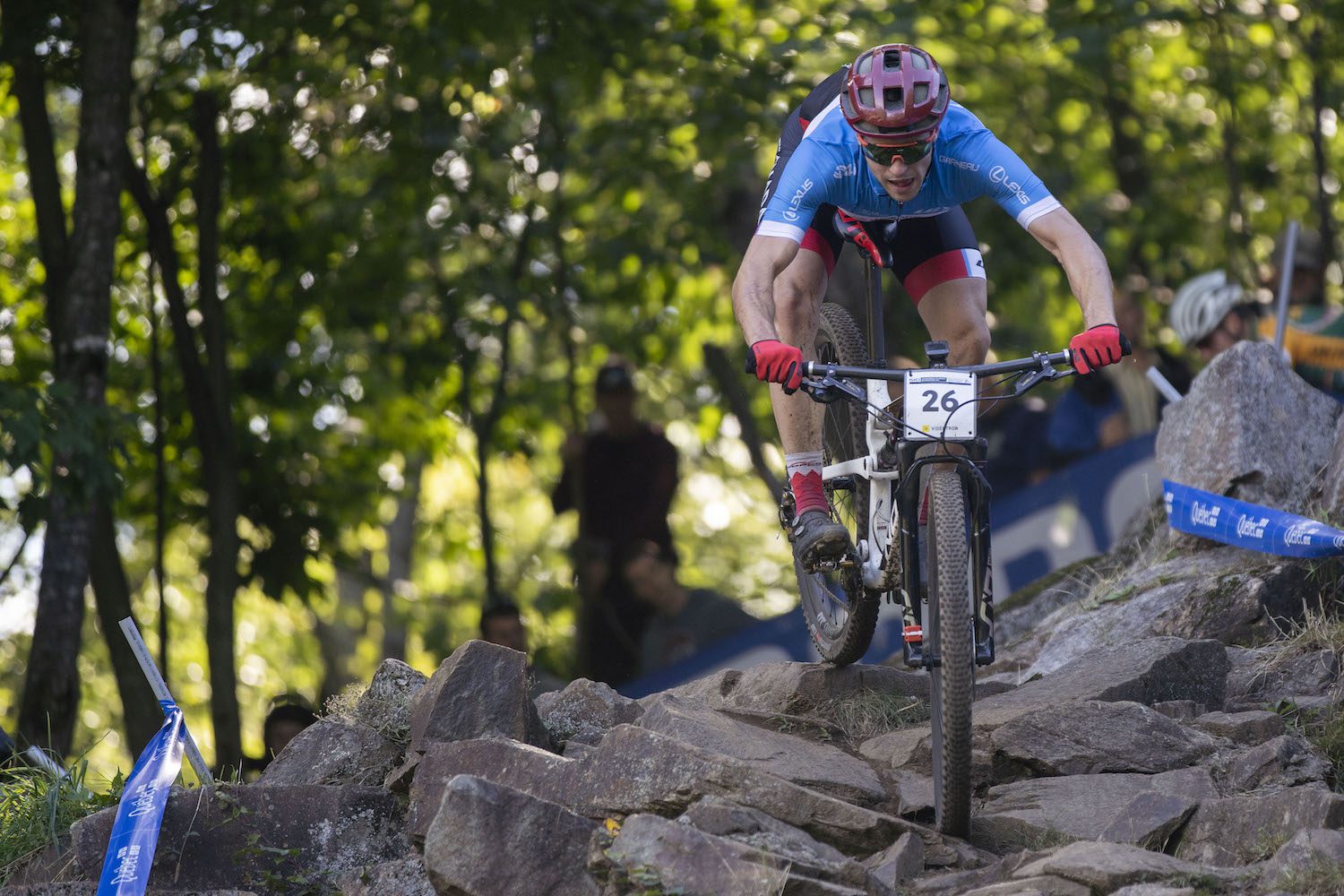Canadian racers share their inside lines on the Tokyo 2020 Olympic cross country course
Pendrel, Disera, Smith and Walter weigh in on what to expect from Izu XCO course next year

The Tokyo Olympic mountain bike course looks incredibly difficult on screen. Large drops, huge boulder gardens and steep hills set the venue apart from the regular World Cup courses.
But how does it feel in person? We asked four top Canadian cross country stars, including one rider who already has an Olympic medal to her name, what it was like to race the Izu course as part of the Tokyo MTB test event.

Catharine Pendrel
– 2x world champion, 3x Olympian, 2016 Olympic bronze medallist –
I think it is one of the most diverse courses we have been presented with. It is a 50/50 split of new style features like rock gardens, jumps and berms contrasting many off camber natural woods sections. The climbs are quite steep and short and combine to keep you constantly pushing, but likely our greatest challenge will be the high humidity and projected 38 degree temperatures.
Is there one feature on the course, or about the venue, that stands out to you?
It is beautiful! The course designers really went all out to deliver a spectacular track and I think it will yield some exciting racing.

Peter Disera
– 2017, 2018 and 2019 Canadian Elite XCO national champion –
The Olympic course in Izu is going to be a fun one. The course consists of multiple punchy, steep climbs. The climbing is relatively broken up with only one cumulative effort, but what that means is the racing stays pretty tight. It is pretty full on all the time.
Is there one feature on the course, or about the venue, that stands out to you?
The features are big but flow nicely. There are some high consequence areas but honestly most of my mistakes were made in the off camber sections between as these got real loose. I hope I get a chance to race this course next year. It was a blast to ride and suits me well.

Haley Smith
– 2018 Commonwealth Games bronze medallist, 3rd at 2019 World Cup in Nove Mesto, Czech Republic –
I was quite intimidated by the course at first: the features are visually impressive and big, and the linking sections of trail are off-camber, loose, and very natural. Once we got around to riding it, we found the flow and realized that the technical features are manageable and actually fun to ride. My impressions are that the course is challenging (possibly one of the most challenging international courses we’ve ever raced), relentless, and really impressive for spectators. It’s also just fun!
Is there one feature on the course, or about the venue, that stands out to you?
As I said, the features are all quite impressive and a LOT of work went into making them. I think, though, the most standout feature of the course is its overall design. The course is designed with so much attention to detail, from the “zen garden” section (a large section of the course that is in the shape of the Izu peninsula from an aerial perspective, and covered in beautiful pink flowers), to the perfectly placed boulders, to the stylish red bridges throughout the course. It really is a masterpiece.

Sandra Walter
– 18th at 2019 UCI Mountain Bike World Championships at Mont-Sainte-Anne, Que. –
This was my first time seeing an Olympic mountain bike course in real life and it was very impressive. From past Olympics I’ve followed on TV and in images, the tracks have always looked incredibly manicured and I thought they were essentially gravel, multi-use paths punctuated by contrived features. I’m sure there was much more to them than that, but from home, we only get to see what the cameras show.
While the Tokyo track certainly has purpose-built features, tons (literally) of rocks that have been placed a certain way, and includes sections of wide gravel, there is so much more to it than that. When we were first allowed to ride it on Thursday, portions in the woods were virtually untouched, loose dirt. There were no real lines — only what Donna Fox (the moto trials rider, who will ride lead moto for the race at the Olympics) had ridden. We essentially created those trails by riding and finding the fastest lines through, which is super cool, when you think about it.
RELATED: Podcast: Sandra Walter’s tips cyclocross Halloween costumes
Most of the features are blind, which is what makes them challenging. There are lots of steep rock rolls and jumps, and you can’t see the exits until you’ve already committed. The hardest part for me was remembering what was on the other side of each one, and where I wanted to exit. With so many line options to memorize, consequences can be high if you get it wrong. Another notable thing about this course is that the climbs are very steep. It’s hard to emphasize enough how steep they are. Luckily they’re pretty short, but the grades and challenging traction definitely add to the difficulty of the course. There are also a lot of off-camber side-hills and flat corners, and I’m curious how the track will run if it’s wet and muddy. Overall, it will make for a super exciting Olympic race and I’m so pumped I got to experience this first hand — it was an amazing opportunity and I’m grateful to Cycling Canada, who decided to call me in last-minute to help the team prepare for 2020!
